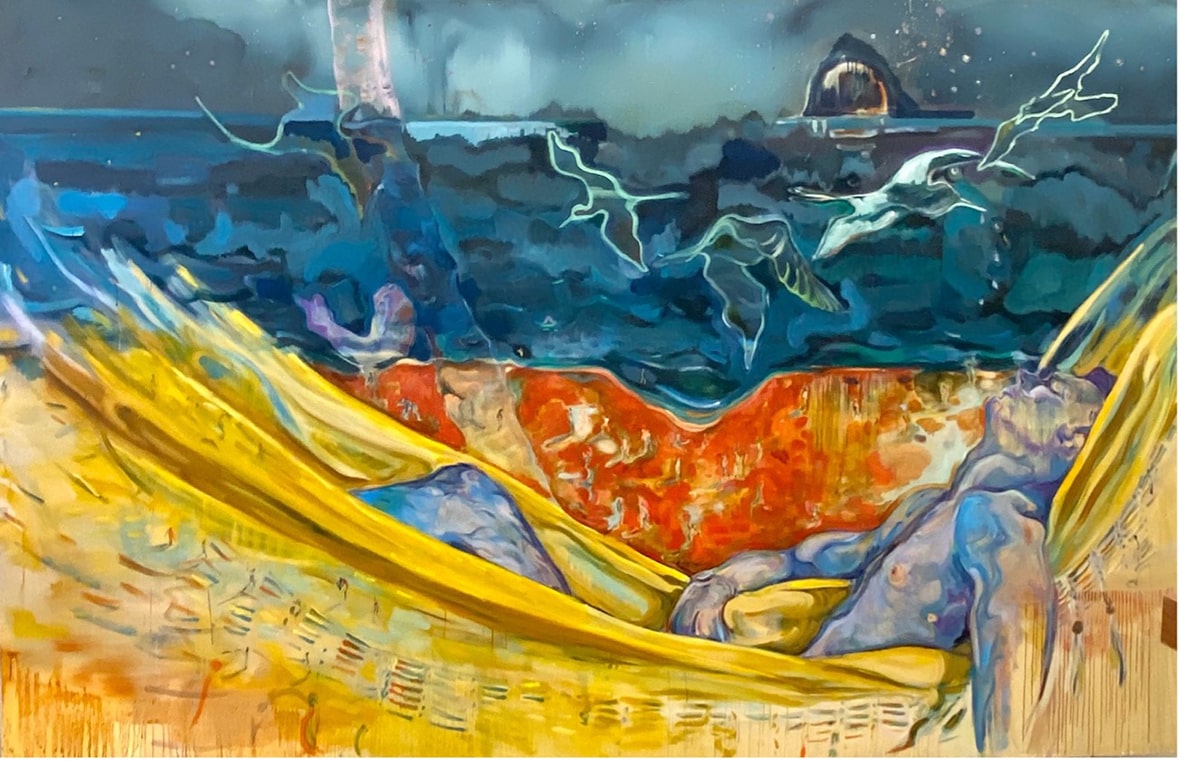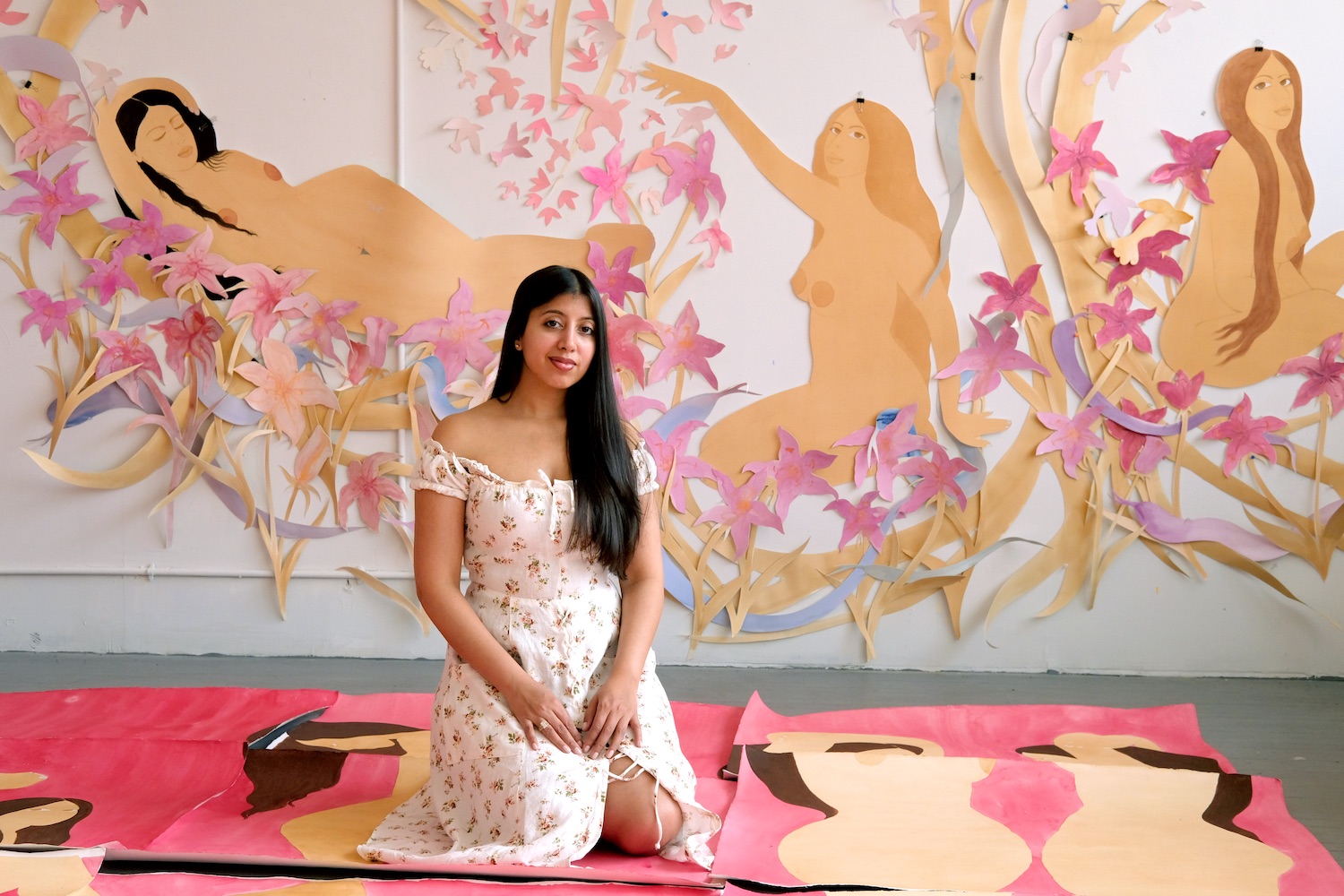Last fall, Nara Roesler gallery in New York presented the work of Maria Klabin in the solo show “Liquid Air.” The Brazilian artist’s first in the U.S., it was curated by Luis Pérez-Oramas and featured intimate and expansive paintings that ranged from still life to portraits, landscapes to dreams. Rich in color and fluid gesture, they showcased Klabin’s more recent fondness for painting what’s in front of her, remarking on the way a simple tomato can ground us in untethered times.
Loving portraits of friends and family asleep on hammocks or couches felt utterly tender. And landscapes dripping with plant life, near-psychedelic hues, and spectral figures on the horizon were entrancing. Klabin’s paintings are both a force and act of devotion. From her studio in Brazil, she spoke with Whitewall about the leap of faith it takes to start a painting, the relief in seeing it come together, and the patience it takes for art to be good.
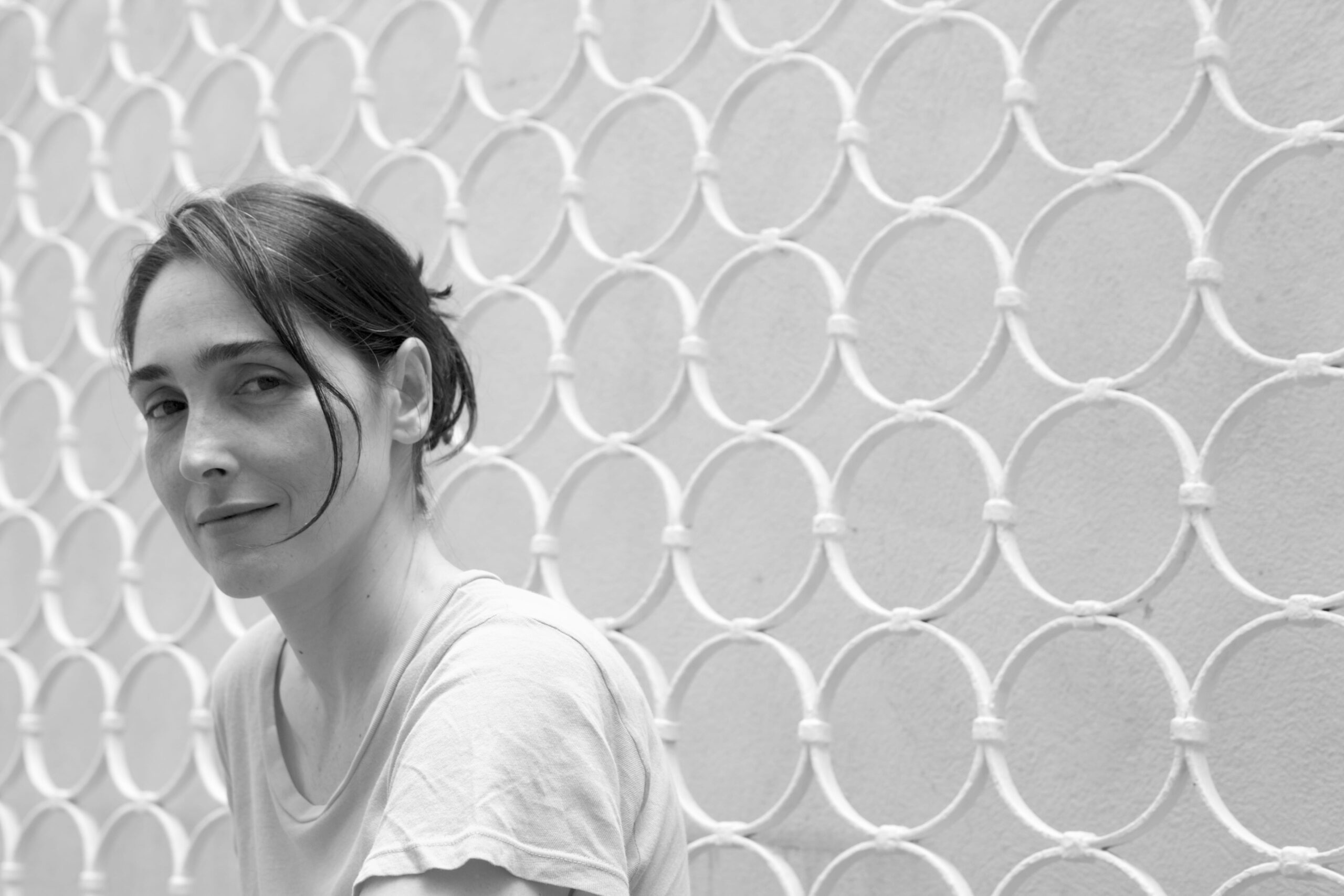
Maria Klabin, portrait by Giovanna Lanna.
WHITEWALL: After studying and working in photography and sculpture, you fell in love with painting, and as you described, feeling an immense attraction to the sensation they provoked. What made you fall in love with the process of painting?
MARIA KLABIN: The attraction I felt towards painting was the same as I did with sculpture. I think it had to do with the nature and physicality of the materials and their endless possibilities.
When I was 13 or 14, I remember shutting off the lights before going to bed and, with a little flashlight, looking at the pictures in a coffee table book of Impressionist and post-Impressionist paintings I found at home. I needed privacy for it felt important and pleasurable.
Brancusi’s fish was one of the first works that were mind-boggling to me. I remember looking at it and realizing that one thing could be two things at the same time. It was at once a clear, straightforward piece of stone and in a blink it became the most alive fish in movement I had ever seen. No tricks involved. Magic, for real. It was clear to me early on that art was the most powerful tool in its capacity to reveal. Nothing else came close.
WW: At the beginning of the pandemic, you talked about painting the objects and people that were around you. What did you discover in that process?
MK: The first thing I discovered was that at that moment, painting was first and foremost an act of caring. We never really look at things or people; we mostly classify what surrounds us. What we see are a bunch of definitions, usually preconceived, and ideas. The complexity and beauty of the patterns we can detect by just really looking, and not thinking, in the simplest of objects, or in landscapes or in the skin, is almost cosmological. For that, we need to recede from this world of classification in which we are immersed.
It was also the way I found of holding on to a simple yet permanent reality. Tomatoes and yams proved to be very effective life buoys. It was too soon to look inward, as everything was in a state of flux, including myself. I found pleasure in loving through looking deeply at what was just there.
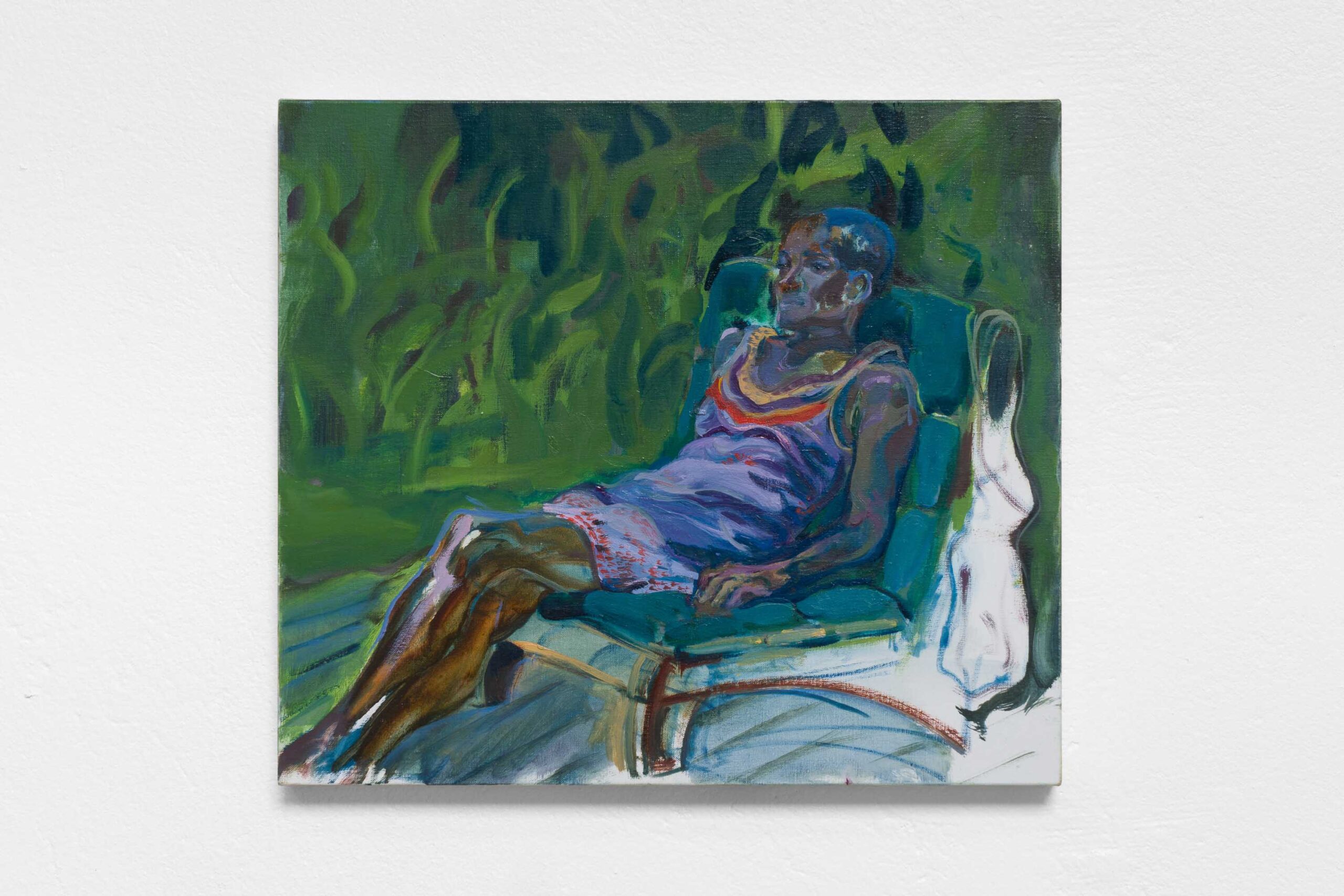
Maria Klabin, “Noeli 1,” 2020, oil paint on linen, 13.8 x 15.7 inches, courtesy of the artist and Galeria Nara Roesler.
WW: Where do you start with a painting?
MK: The starting part is the most difficult. Together with the stopping part. I try to convince myself that it will become less oppressive with time and experience, but every new painting ignites the same level of anxiety in its first stages. It’s as if I start from scratch every time and am sure I’m not going to get through it. It’s always overwhelming. That’s why the more I’m working daily the better for everyone, not just myself. It feels a little more like a continuum. Staying close to it and working constantly diminishes this insecurity, and every time this initial phase is surpassed, it all falls into place and it’s the most amazing feeling. It’s like going into a dark room and having to grope your way around until your eyes start adjusting and you’re then able to recognize the things that are there, and that’s what you’re going to work with. And then comes a feeling of relief and excitement.
WW: You recently had a solo show in New York at Nara Roesler, “Liquid Air.” What was the starting point for that show?
MK: This is a difficult question to me. It’s like the starting point of a painting. I need to have a starting point more as a driving force, but most times it seems to become irrelevant once the painting starts. So the starting point of a show is whatever I have been doing, and a selection of the images I have been collecting, during the two or three years preceding the show.
It goes back to that epiphany with the Brancusi fish. I’m always watching out for clues, for whatever has the potential to become more than itself, no matter what it is, or whether it’s good or coherent with what I have been doing. Coherence in art can take a long time to detect, but it’s usually there. We need to have trust in that and just move forward. That’s why curators are important—they will see what is not given to us to see. I have a hard time seeing my own painting or knowing exactly what has been done during the process and right after.
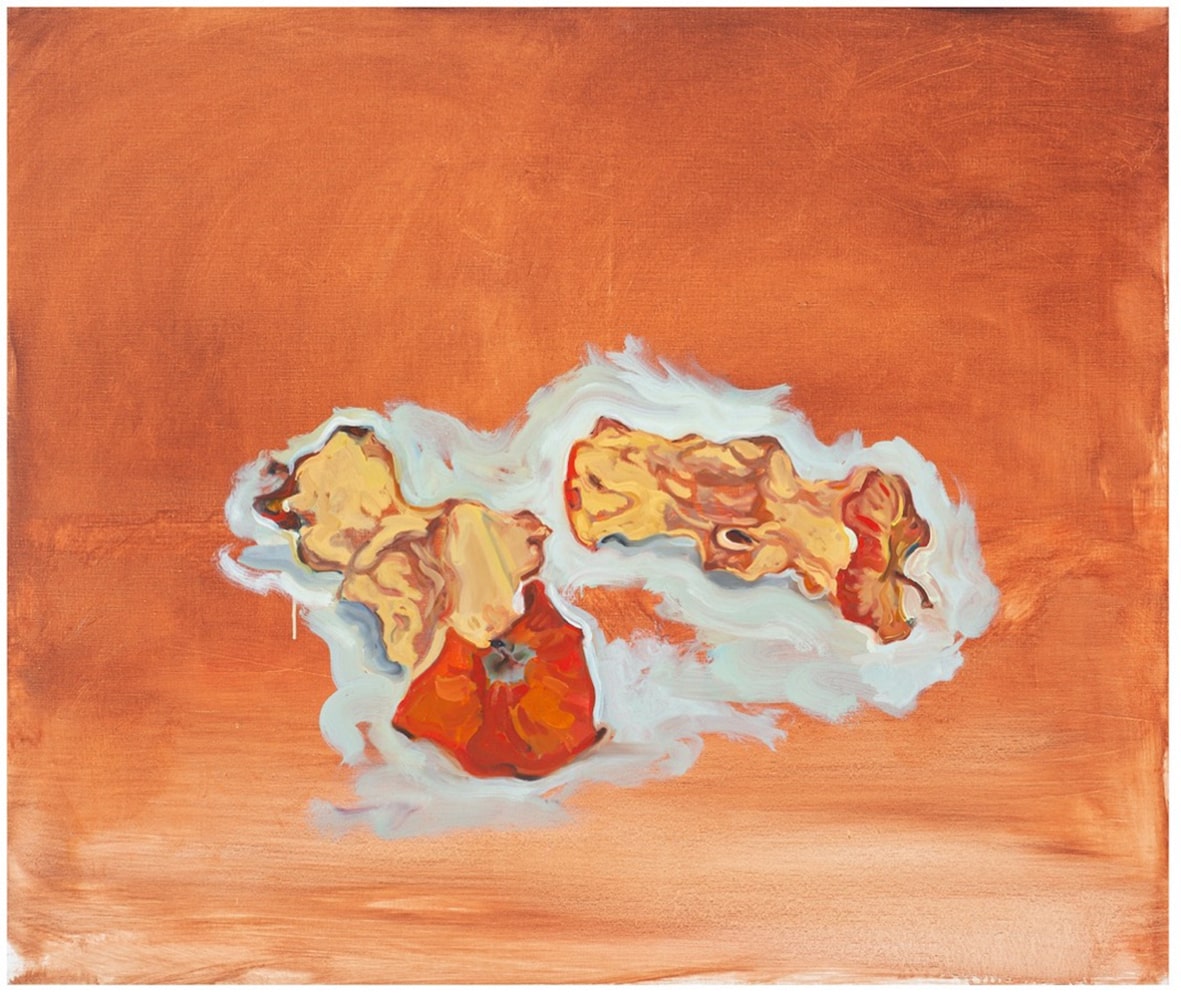
Maria Klabin, “Bones,” 2021, oil paint on linen, 31.5 x 37.4 inches, courtesy of the artist and Galeria Nara Roesler.
WW: You’ve described oil paint as an extension of your body, and said that you feel like the painting knows more about you than you do it—that there’s a mystery to painting. How do you open yourself up to the canvas and the paint, to let whatever needs to happen there happen?
MK: To the last part of your question, I really don’t know. That would be the honest answer. I think it’s a geographical matter. It’s about finding this place, an internal place, where this process has the right ground to unfold. I never work for such long stretches, for when I sense that this place has been distracted or something is off, I stop.
As for how mysterious painting is, I truly believe it has a certain superpower, or an earthy wisdom, a secret knowledge in the materials, beyond our comprehension. So a big part of any painting is how these materials behave and develop, physically and in our perception of it. The painting is activated by us, propelled by us, but always has something to reveal back to us—some of it immediately, some of it years later, and sometimes only generations later. That for me is proof enough that it knows more about us that the other way around.
WW: Can you tell us about your studio?
MK: My studio is walking distance to my house. Sometimes I come and go several times a day, and I’m there almost every day. Even when no apparent work is being done, I am surrounded by works in process so as not to lose intimacy. That’s a way of carrying them around in my retina all the time even when I’m away. It is a place where I can feel safe and know I will not be interrupted. A place that welcomes the fragility and vulnerability inherent in risk-taking, immersion, disquiet, loneliness, and all that’s inherent in the process of painting.
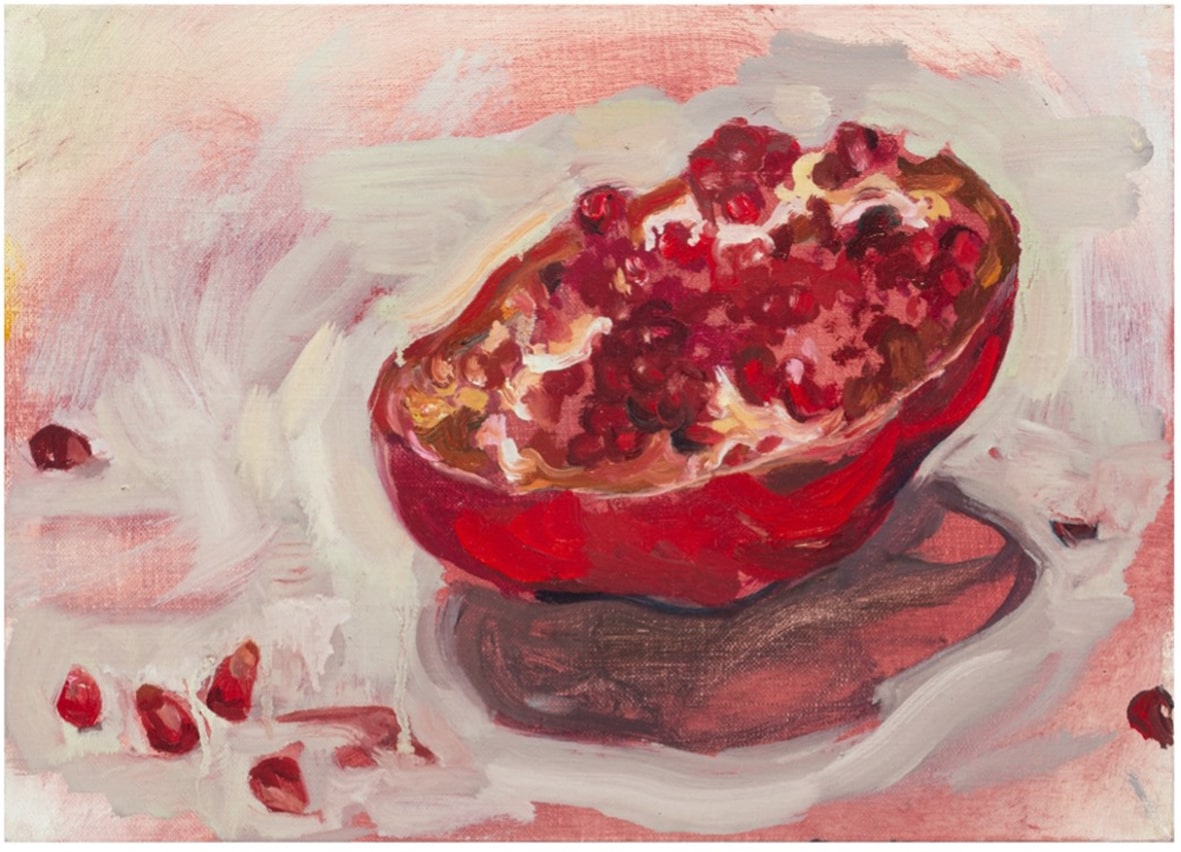
Maria Klabin, “Pomegranate II,” 2021, oil paint on linen, 7.1 x 9.8 inches, courtesy of the artist and Galeria Nara Roesler.



